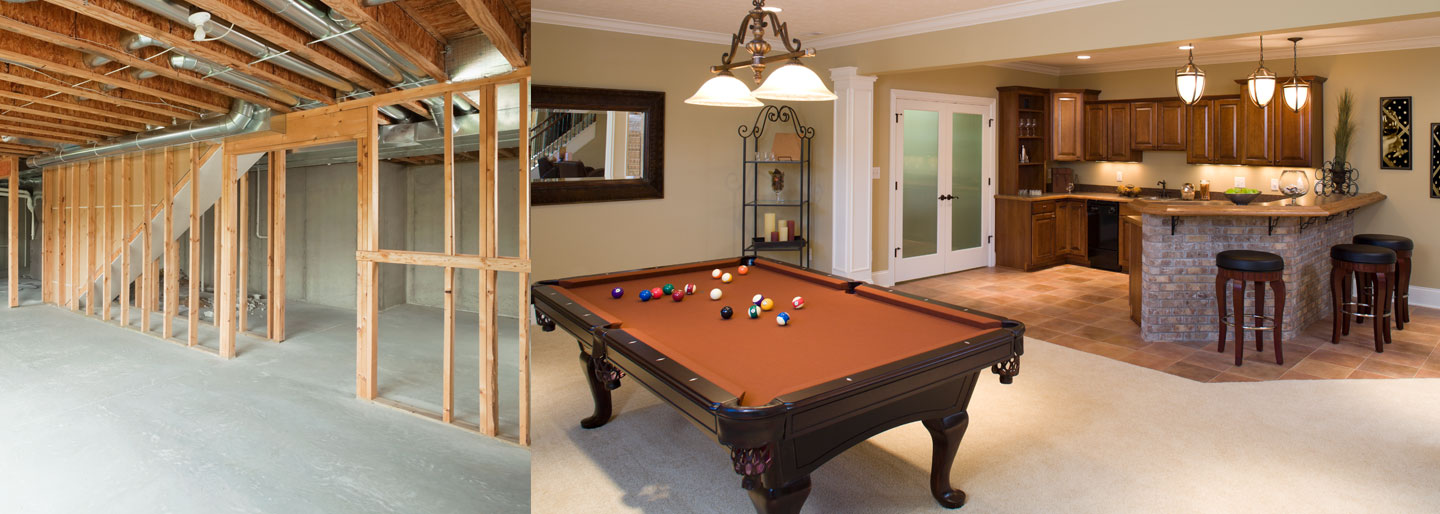When assessing ways to increase the value of your current home, think about upgrading your basement. Whether it is a complete finish job or just a renovation, this is a great place to invest. Not only can you gain much-needed living space, but the improvement will also have a value whenever you decide it’s time to move.
“The percentage of people requesting a home with finished spaces often depends on the price of the house. Those buyers who are spending $400,000 plus usually expect at least a partially finished basement. The more expensive the home, the more amenities they require. I would say about 50% of buyers are adamant that there is some area in the basement that is finished. The other half don't care or are willing to take on the project themselves if a basement is not finished,” says Beth Bradshaw, a realtor with ReeceNichols in Kansas City.
It is important to understand the valuation will not be as high as the main floor and upstairs living space. The square footage value on a finished basement is calculated at a lower rate than the other floors.
Conversely, building an addition on to your house is very pricey - it is far more affordable to utilize the basement. You have less expenses when the area you are finishing already has the floor, walls, wiring and plumbing.
The general rule of thumb is a finished basement can be valued at 50-75% of the value of the above ground floor space.
To determine the opportunity to increase the value of your home, you will first want to figure out what type of basement you have. Your home’s basement should fit into one of three categories:
- A full walk-out basement is the most valuable.
- A partial drop in grade (sometimes called a daylight basement) which allows for some windows and the sun, but maybe not a full-size door.
- A non-walkout, which typically has no natural light and is the least attractive to prospective buyers.
Other value-killers: dropped ceilings that limit ceiling height, no bathroom and a rough layout.
Next, you want to think about what things to add to increase the home value. “As far as trends are concerned, the most traditional uses of the area is an extension of family and entertainment space. Usually, people are looking for a wet bar, a great spot for a large flat screen TV and comfortable furniture. Many buyers want a space for their children to play and store toys. A man cave area or a space for teenage children to hang out is also often on their wish lists,” says Bradshaw.
One important thing to decide is whether this upgrade is more about benefitting your family or about increasing value. If it’s about personalization, go for it. But if it’s about adding value for resale, here are a few things to keep in mind:
- A bathroom is a must if your budget allows for it
- Add other rooms that bring value – bedrooms and family rooms top that list
- Neutral colors are better to appeal to a greater number of prospective buyers
The more you personalize the renovated basement, the more you will enjoy it. Conversely, if it’s about selling your house, you may be alienating buyers. If the plan is for family use and enjoyment, then by all means – get creative! Some items that are currently popular in basement renovations right now include:
- home theaters
- wine cellars
- home gym
- kid’s playroom
- home office
- art studio
- music room
- a man cave (sports memorabilia, big-screen TVs)
- in-law suite (for parents living with you)
“I have seen a few unique finishes in basements. One home I showed had an excellent home brewery built in about half of the basement. Movie theatres, complete with large, comfortable leather recliners are very popular. I saw a library in a lovely home with built in bookshelves, beautiful, comfortable seating and fantastic lighting,” recalls Bradshaw.
Now that you have a budget and plan of what you want in your basement, there are some basic guidelines you want to follow. For starters, make sure every improvement is up to code and you have any needed permits. Make sure there is no water damage, and any issues with water are completely fixed before starting the upgrade. Ceilings should be a minimum of eight feet high for comfort and resale value.
Whether you’re having a contractor handle the project or embarking on a major DIY adventure, these guidelines should have you enjoying your new basement in short order and add lots of value to your home.
And one last note from Bradshaw: “I have found that the biggest mistake when finishing a basement is using cheap materials and finishes. Also, I have seen a few home owners that became over-zealous with their construction and finished too much area leaving very little space for storage.”
What would you do with a finished basement? Share it here!
Categories:
Your Home
, Smart Spending



Comments
Rhianna Hawk